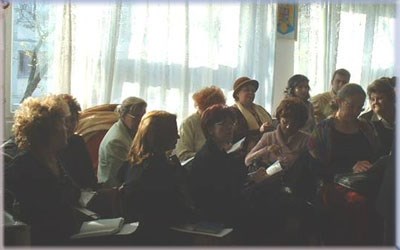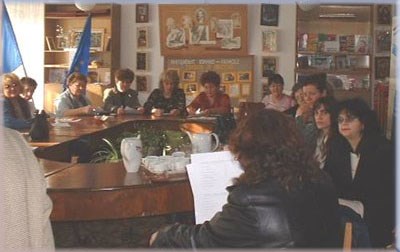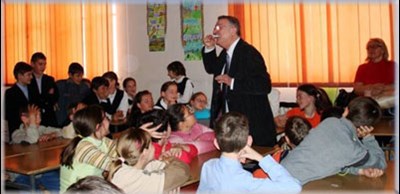Romania - Fluoride mouth rinsing Programme in Schools in Constanta and Iasi connties (2001-2010)
Romania - Fluoride mouth rinsing Programme in Schools in Constanta and Iasi connties (2001-2010)
Introduction
In order to assess the directions and objectives of future oral health national programme, a study on schoolchildren was conducted in Romania in 1992.This study showed that 90% of 12-year-olds were affected by caries and the DMFT was high as 4.1. Hence the National Programme for Prevention of oral Diseases (P.N.I.5) was launched in 2000 in Iasi and Constanta counties as pilot trials.

Romania map
Background
This Programme was funded by the Ministry of Health in order to reduce the prevalence of caries in the school children in grades 1-4 ( 6 – 11 years old). The Programme provided oral health education and also introduced supervised fluoride mouth rinsing with a neutral fluoride solution containing 0.275% sodium fluoride (Fluorostom, produced by the National Institute of Chemical–Pharmaceutical Research, ICCF, Bucharest) every week in Grades 1-4 in both the Counties.
Programme Outline
Iasi (2000)
- During 2000-2001 school year, children in classes 1 to 4 rinsed their mouth weekly (on the same day each week, under teacher supervision) with Fluorostom solution (10 ml) for one minute.
- Number of children included in the programme grew from 8000 in the year 2000 to 12,800 in 2005. It then decreased gradually as the funds were reduced.
- Oral health education sessions for teachers, parents, and children were also held.
- Each year, meetings were held to inform parents and to promote media interest.
Constanta (2001)
- The programme included children aged between 6 and 11 years from Constanta city (42 schools, including the two special schools) and from other cities and villages (Navodari, Ovidiu, Mangalia, Medgidia, Eforie, Neptun, Basarabi, Cernavodã, Hârsova, Techirghiol, Mihail Kogalniceanu, and Ghindaresti) in the county (29 schools).
- Approval was obtained from the County School Inspectorate; in order to obtain this consent and also to help the programme’s development, the programme director held meetings with teachers of the participating schools.
- Consent of the parents for inclusion of their children in the programme was obtained. Parents participated in lessons to teach oral health and were also informed about the benefits and possible risks of the programme.
- A media programme was held through meetings with television and local newspapers, to increase awareness.
- Every Thursday morning (between 8:00 and 11:00) during the school year, for 32 weeks, a member of the Faculty of Dental Medicine of the Ovidius University and the teachers at the schools supervised rinsing. Children were restricted from eating and drinking for one hour after rinsing.
- In 2001, the total number of pupils in Constanta county included in the Programme was 21,200.
- Number of children enrolled began to decrease gradually (15,000 in 2002, 12,000 in 2004, 10,000 in 2007) as the funds reduced. From its inception in 2001, the programme maintained a 90% participation rate. In 2010, funding stopped.
In both Iasi and Constanta, clinical epidemiological cross-sectional studies were performed on representative samples of schoolchildren from the two counties (α=0.07), selected by stratified random sampling in 2000/2001, 2004 and 2007.


Meeting with teachers and parents


Oral health education
Achievements
After seven years of fluoride mouth-rinsing programme, the mean DMFT index for 12-year-old children age groups decreased by 12.15% in Iasi and by 28.96% in Constanta.
This study clearly demonstrated the efficacy of running the National Programme of fluoride mouth-rinsing in Iasi and Constanta.
Conclusion
Due to the financial crisis this programme has been discontinued since 2010. However there is a need for future free community-directed caries preventive and oral health promotion programmes, in order to improve the oral health status in Romania and to achieve the WHO goals for oral health.
By J. Stjernswärd and I. Danila
Reference
Danila I, Amariei C, Nuca C, Bobu L. The Romanian National Programme for Caries Prevention: The Experience of Iasi and Constanta Centres, Romania, 2000-2007. OHDMBSC. 2010;9:88-97.
